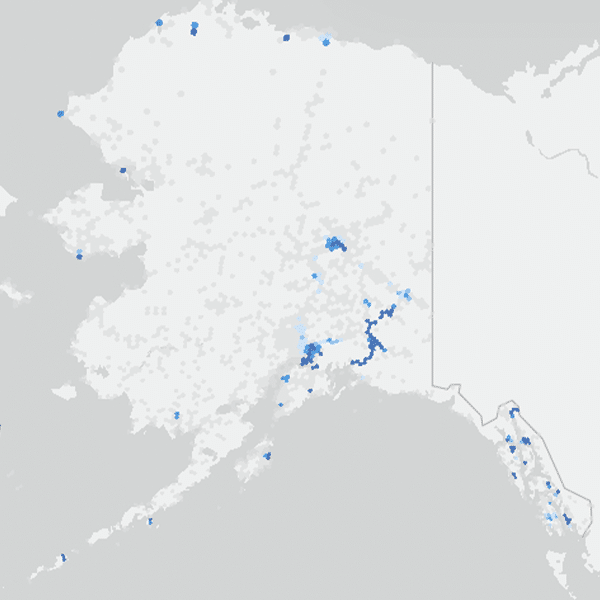 The FCC is considering two different proposals about what to do with $185 million in unclaimed funding from Phase 1 of the broadband Connect America Fund program. In a notice of further proposed rulemaking made public yesterday, the commission seeks stakeholder input on the proposals.
The FCC is considering two different proposals about what to do with $185 million in unclaimed funding from Phase 1 of the broadband Connect America Fund program. In a notice of further proposed rulemaking made public yesterday, the commission seeks stakeholder input on the proposals.
One of the proposals calls for adding the unclaimed funds to a future Phase 1 program, as well as revising Phase 1 rules to expand the areas where funding could be used and potentially changing the parameters for distributing funding. The other proposal calls for using the funds toward Phase 2 of the program.
Phase 1 of the Connect America Fund kicked off this year, offering a total of $300 million to the nation’s largest price cap carriers to help cover the cost of deploying broadband to areas that cannot get broadband today. Carriers were offered funding at the rate of $775 per line to build out service to a portion of their unserved customers, but only $115 million of the funding was claimed.
Some carriers that declined funding said that $775 was not sufficient, while others asked for modifications to the program parameters. AT&T said it was still finalizing its rural strategy – a strategy that has since become clear with the carrier’s recent announcement that it would expand DSL and mobile LTE services to reach unserved rural areas.
What’s in the FNPRM
According to the new FNPRM, the FCC’s initial plan was to make $300 million available in price cap territories every year until Phase 2 of the program gets underway. (If Phase 2 were to kick off in 2013 as originally hoped, the $300 million might have been and potentially could yet be a one-shot cash infusion.)
Phase 2 of the CAF program aims to distribute $1.8 billion per year for five years to price cap territories based on a new cost model currently under development, with the goal of making broadband available to all homes in those territories that cannot get broadband today. Funding for the programs is to be redirected from today’s voice-focused Universal Service program.
For Phase 1 of the Connect America Fund program, funding initially was targeted toward homes that cannot get broadband at speeds of 768 kbps downstream and 200 kbps upstream. Under the proposal that calls for a new round of CAF Phase 1, carriers accepting funding in that round would be allowed to use it to bring service to homes that cannot get speeds of 4 Mbps downstream and 1 Mbps upstream – the minimum speeds that carriers are required to deploy in order to receive CAF funds.
Because the government’s National Broadband Map does not specify where 4/1 Mbps service is available, however, carriers would actually target areas with slightly lower service levels.
“We propose to designate an area as unserved by broadband with speeds of 4 Mbps downstream and 1 Mbps upstream if it is shown on the National Broadband Map as unserved by fixed terrestrial broadband with an advertised speed of at least 3 Mbps downstream and 768 kbps upstream,” the FNPRM states.
The proposal also would create a process for challenging information provided on the National Broadband Map. The FCC is asking one of its bureaus to publish a list of eligible census blocks based on the current map and to solicit public input on areas where coverage is either overstated or understated.
“Where the bureau finds that the evidence demonstrates that it is more probable than not that the National Broadband Map inaccurately portrays coverage of a particular area, we propose that the bureau deem that census block as served or unserved, as appropriate, for purposes of Phase 1 incremental support,” the FCC said.
The FCC offers three ideas for how funding would be distributed in the new Phase 1 program. One idea is to retain the $775-per-line approach. Another is to tie funding to estimated deployment costs by wire center using the existing high-cost proxy model (as opposed to the new cost model under development for Phase 2). The third idea is to tie funding to the number of miles of fiber deployed between the carrier’s central office and customer homes. If the latter option were chosen, carriers would also be required to serve a specific minimum number of homes per mile.
The FNPRM also seeks input on how the commission should calculate the amount of funding that should be offered to each price cap carrier. Details about the options under consideration can be found in the FNPRM.
Loose ends
I didn’t see any reference in the FNPRM to the waivers that CenturyLink, Windstream, and other carriers requested when they declined all or part of the funding they were offered in CAF Phase 1. CenturyLink wanted to be allowed to deploy service in areas served by broadband wireless carriers, suggesting that its own service would be more reliable. Windstream wanted a higher level of support per line than the $775 offered in exchange for providing matching funds.
As of early November, the various waiver requests were still pending. But considering that the FNPRM suggests that the full $185 million that was rejected is still available, there seems to be an implied rejection of those waiver requests.
I also did not see any reference in the FNPRM to the status of a Connect America Fund program for the nation’s smaller rate of return carriers. The FCC plans to shift about $2 billion per year from the voice-focused Universal Service program to a broadband program for the smaller carriers but has not yet determined how that program would be structured.
Interested parties have 30 days from the time the FNPRM was issued to offer their comments. Reply comments will be due 15 days later.


